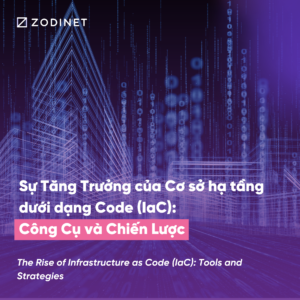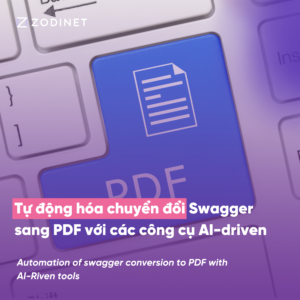
The explosion of technology has opened up a strong digital transformation trend in society and education sector. This has partly changed the way of teaching and learning as well as education management from traditional to modern, creating conditions for the education sector to develop more positively and effectively.
How does digital transformation in education happen?
Digital transformation in the education sector is reflected through the application of information technology in processes such as:
- Teaching and learning process: Smart classrooms, application of technology devices in teaching, online teaching and learning models, digitizing materials, textbooks, etc.
- Operation and management process: Using task management software, document management software, digital libraries, applications for sharing and searching information among student, and school communities, etc.
The importance of digital transformation in education
The digital transformation trend has created conditions for the positive development of many industries, and education is no exception. Especially after a long period of pandemic, we have realized more clearly the importance of applying information technology to education management and teaching. However, the journey of digital transformation in the education sector is not limited to the pandemic period, but wider. The impact of digital transformation in education can be mentioned as:
- Playing an important role in the development of education in the new era
- Expanding the vision and access to more diverse educational resources
- Improving the learning experience and enhancing the quality of education
- Enhancing interaction and communication between teachers and students, increasing teachers’ ability to advise and support students
- Helping to reduce costs, increase the efficiency of school and lecturer activities

Benefits of digital transformation in education
1. Access to more diverse educational resources
- Providing electronic learning materials and textbooks
The open learning environment allows learners and teachers to access materials and textbooks anywhere, anytime and on any device. This is also an essential development direction of modern society and education.
- Access to free online educational resources
Easy access to free resources thanks to IoT technology also provides opportunities for learners to access useful knowledge more actively and equally.
2. Enhancing the learning experience
- Applying modern, diverse and flexible learning methods
Teaching and learning methods are applied with technology such as smart classrooms, online classes, online courses, etc., helping learners to approach technology more closely and increase flexibility in teaching and learning.
- Providing opportunities for students to access the latest technologies
The digital world is constantly developing, applying technology to educational processes helps students quickly access the latest technology to support learning and research.
- Enhancing interaction and communication between teachers and students
Students and teachers can interact remotely without obstacles of space and time by participating in online learning platforms such as Zoom, Google Meet, and many other online learning platforms.
3. Enhancing the ability to advise and support from teachers
- Providing online interaction tools for teachers to easily connect and interact with students
Thanks to the ability to access classes and learning platforms everywhere, anytime conveniently, teachers and students can interact and exchange more, thereby increasing the ability to learn of learners compared to traditional forms.
- Creating conditions for teachers to provide timely solutions and support to students
Supporting and providing timely solutions to learners is also an important factor in improving the quality of learning when both learners and teachers can access free software support.
4. Reducing costs and increasing the efficiency of school and lecturer activities
- Reducing costs for publishing, printing, and distributing educational materials
Digitizing materials and textbooks has opened up optimal cost savings for printing and publishing. In addition, educational organizations can easily distribute materials to readers through online channels without spending too much.
- Reducing costs for organizing direct training courses
Nowadays, creating a course becomes simpler and less expensive thanks to technology. This also helps learners save more when they can participate in any educational program with just a click

Challenges of digital transformation in education
Like every other industry, the digital transformation process of the education sector is a long journey and requires a lot of time and effort to change the awareness and habits of participants in management, teaching, and learning from the smallest things. Depending on the conditions and abilities of each locality, organization, and user, there are always factors that affect such as:
1. Access to technology of students and teachers
- Differences in access and use of technology between students and teachers
- Students and teachers who do not have access to technology may face difficulties in accessing online learning environments.
2. Meeting the needs of students and teachers
- Ability to provide diverse educational resources suitable for the needs of students and teachers
- Ability to meet the technical and software needs of students and teachers
3. Security and privacy
- Safety and security of educational data
- Ensuring privacy for students and teachers
Conclusion
Digital transformation plays an important role in the development of the education sector. The application of technology and digital transformation in education can bring many benefits, such as improving the learning experience, enhancing interaction between teachers and students, reducing costs and increasing efficiency of school activities. However, there are also challenges that need to be overcome such as access to technology, meeting the needs of students and teachers, and ensuring security and privacy of educational data. With the right approach and investment, digital transformation can help the education sector to become more modern, efficient, and effective in providing quality education to students.



